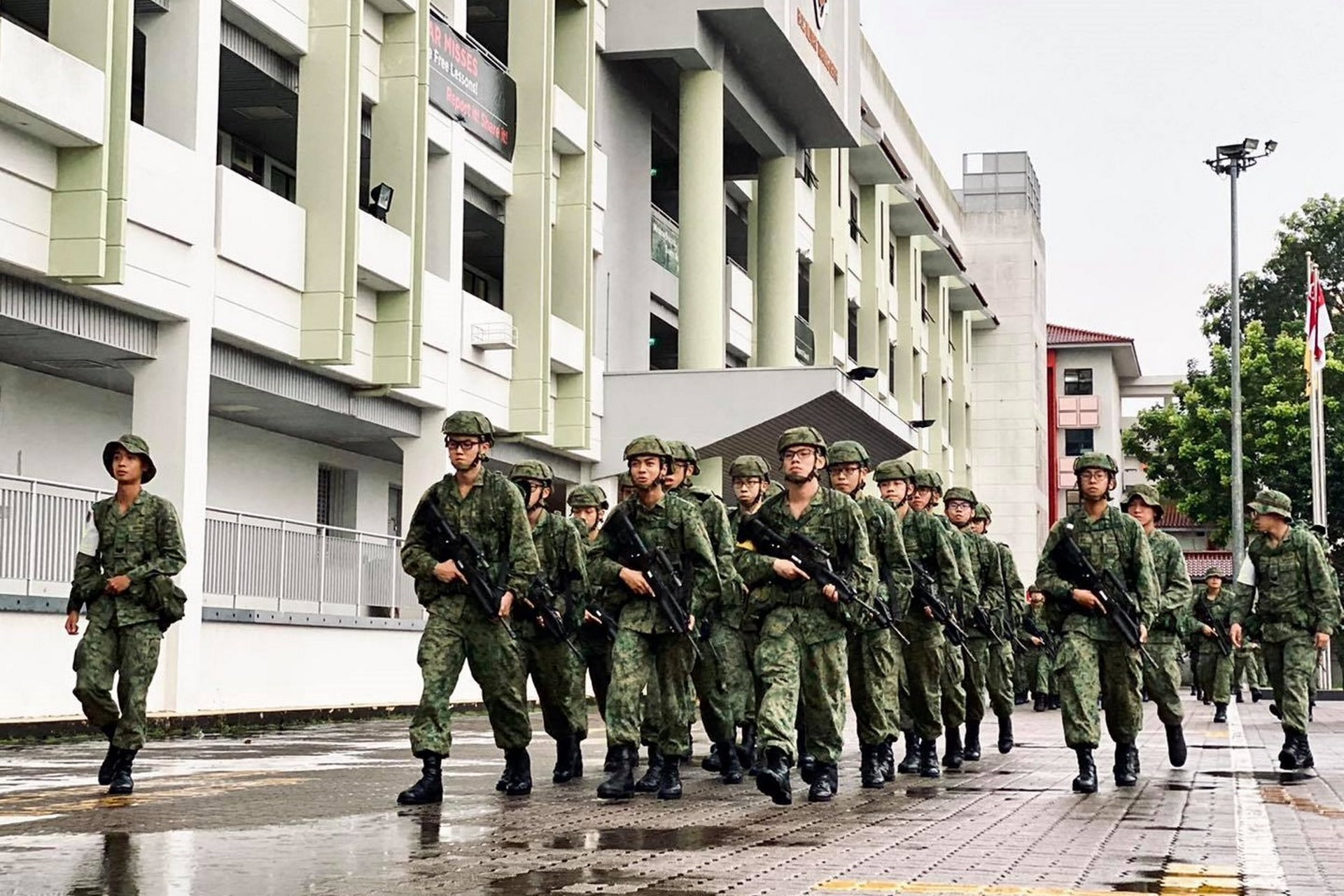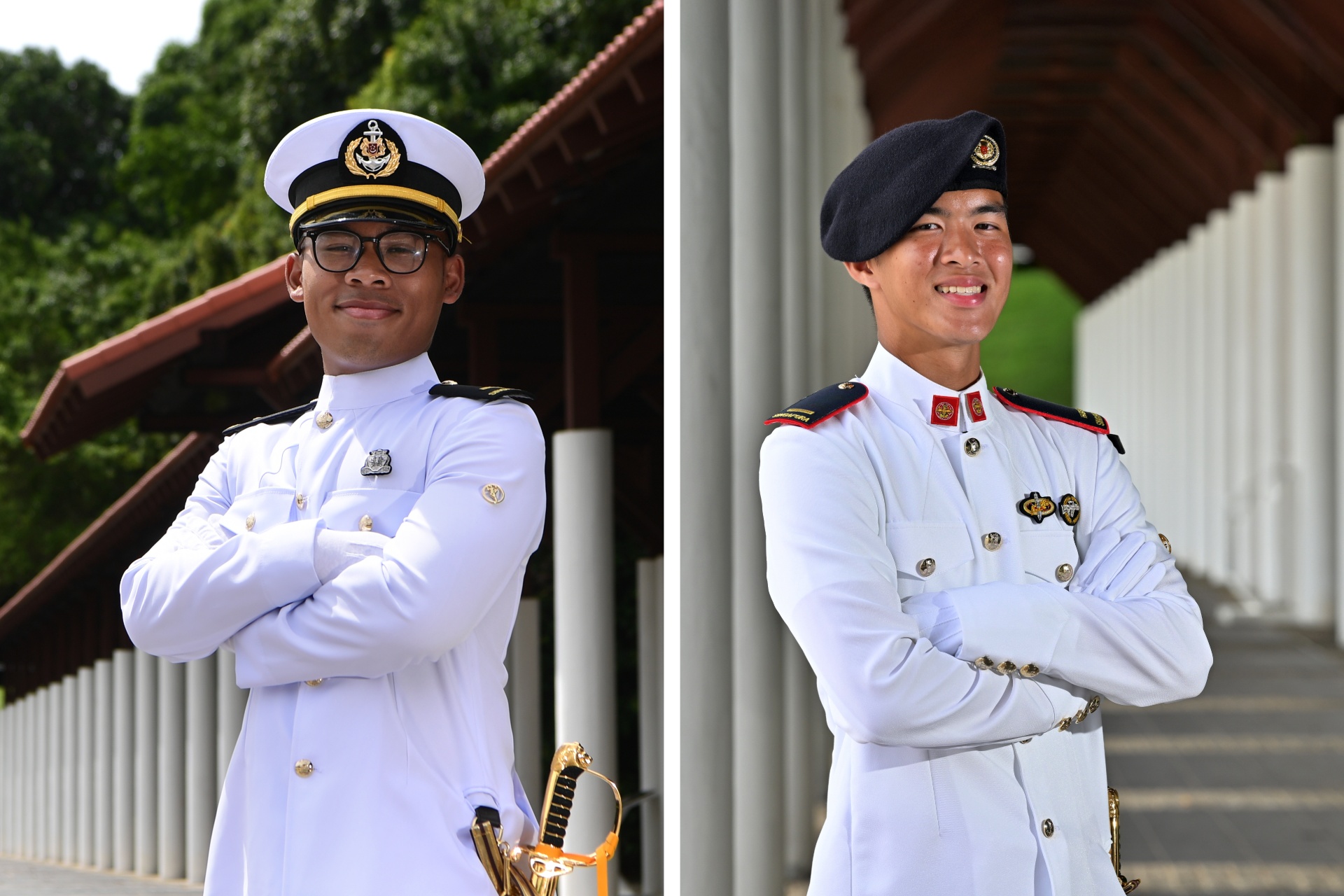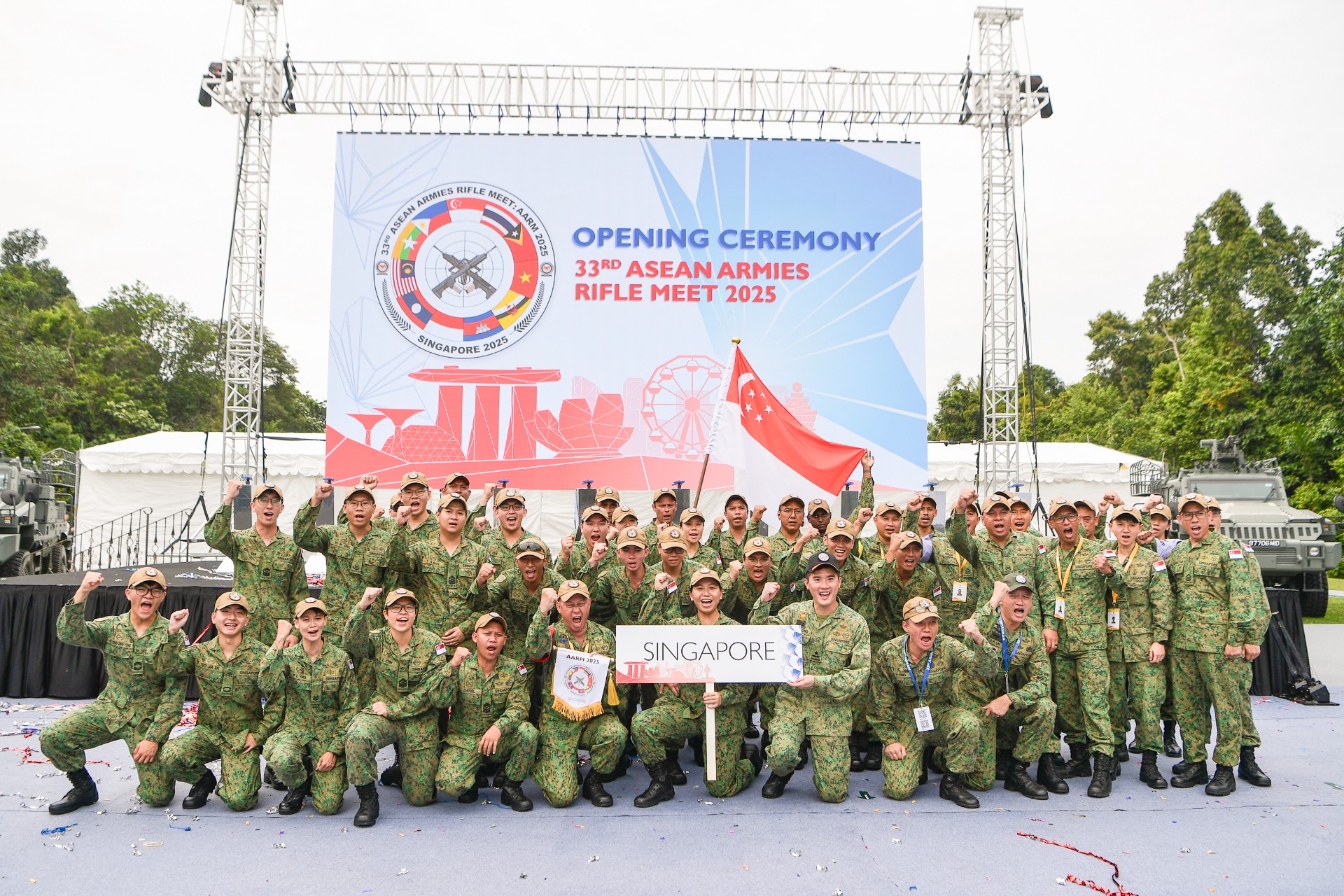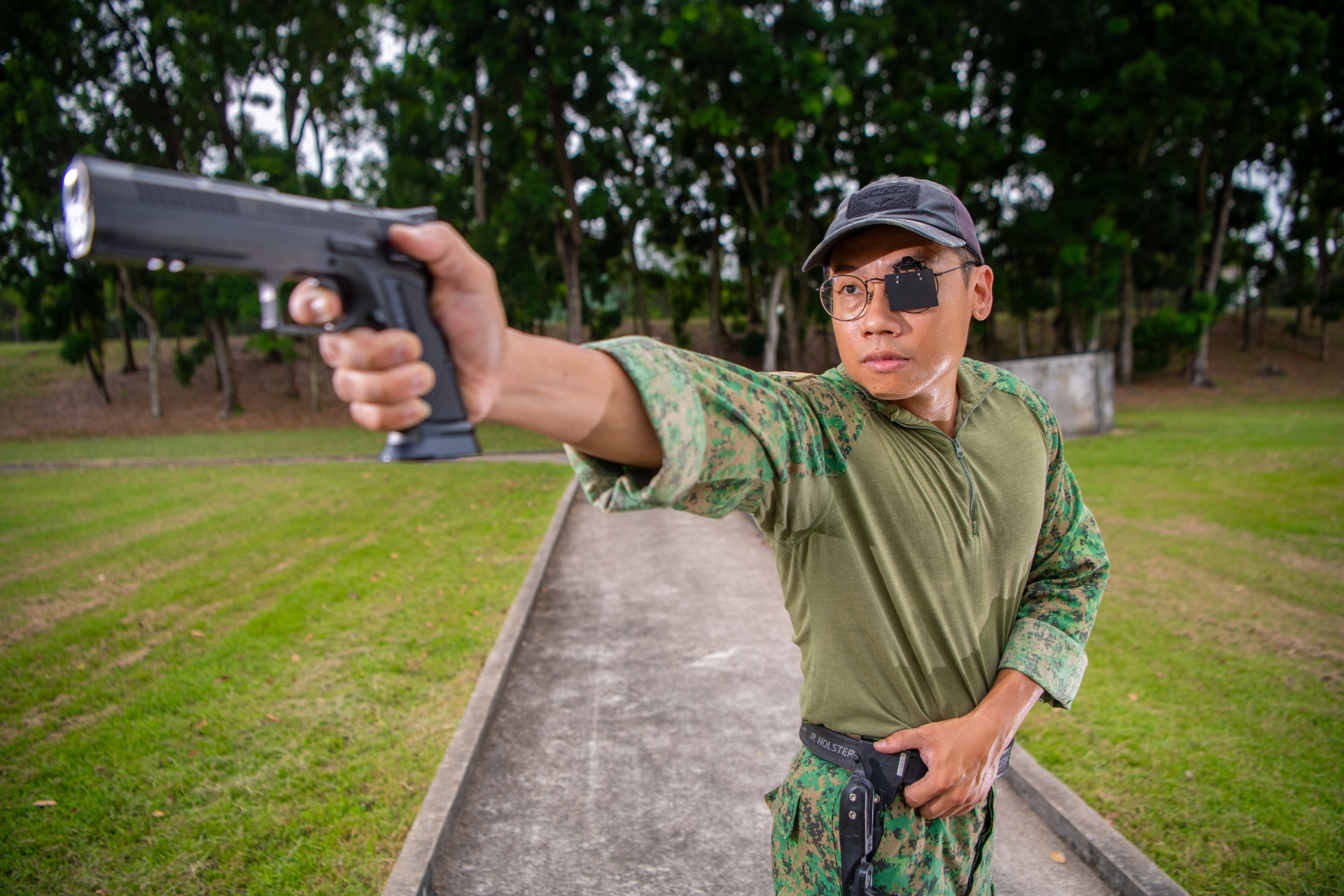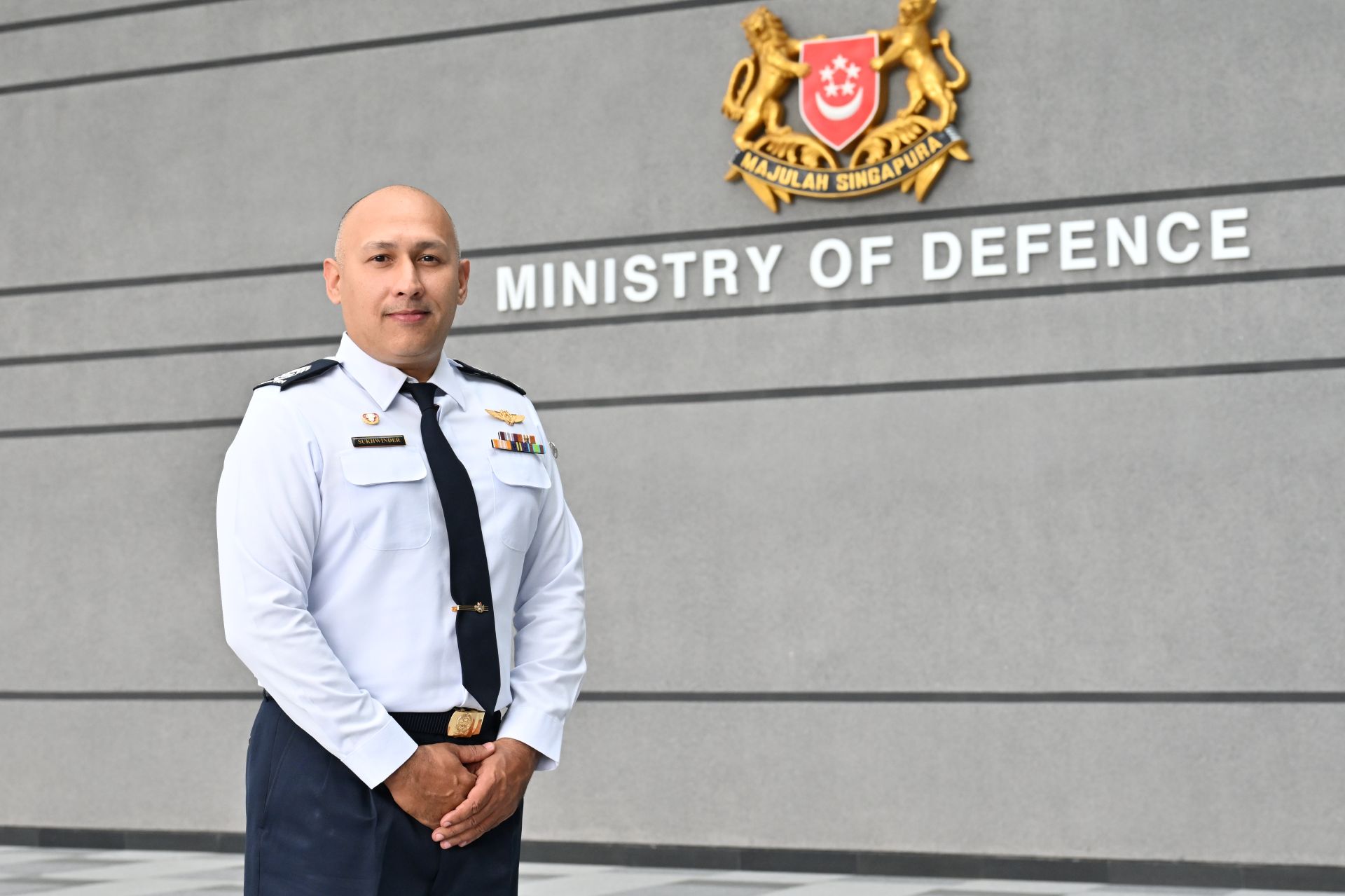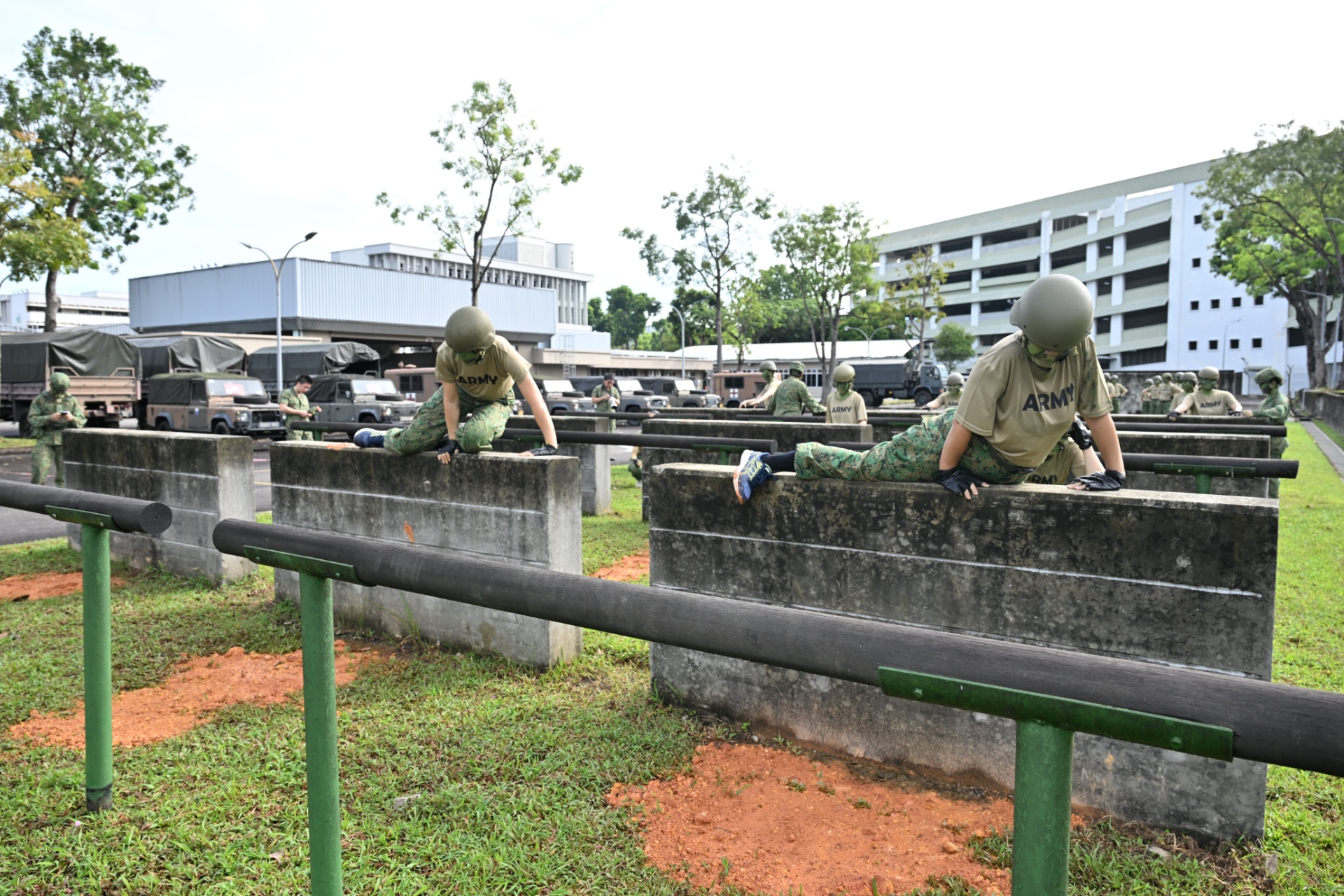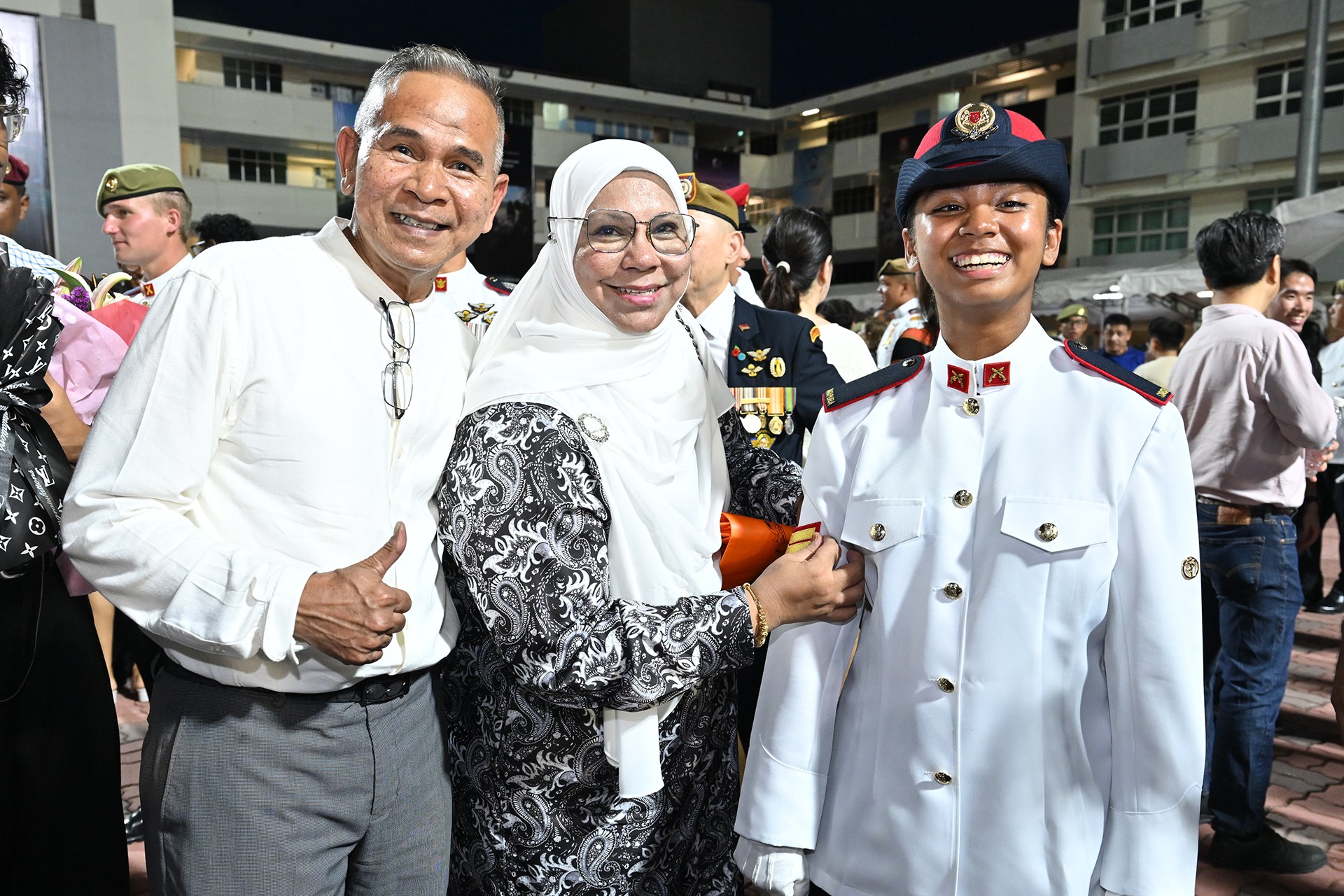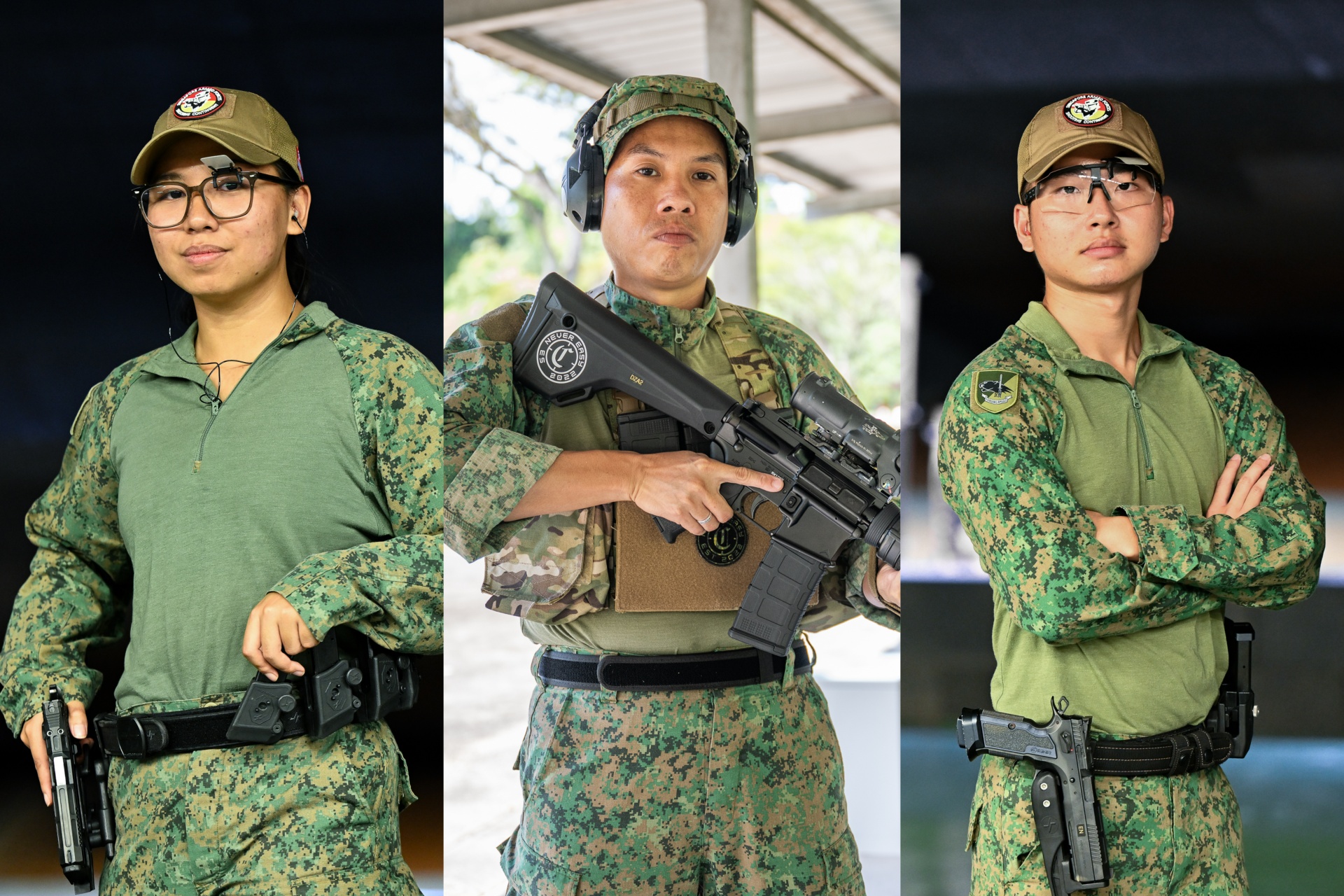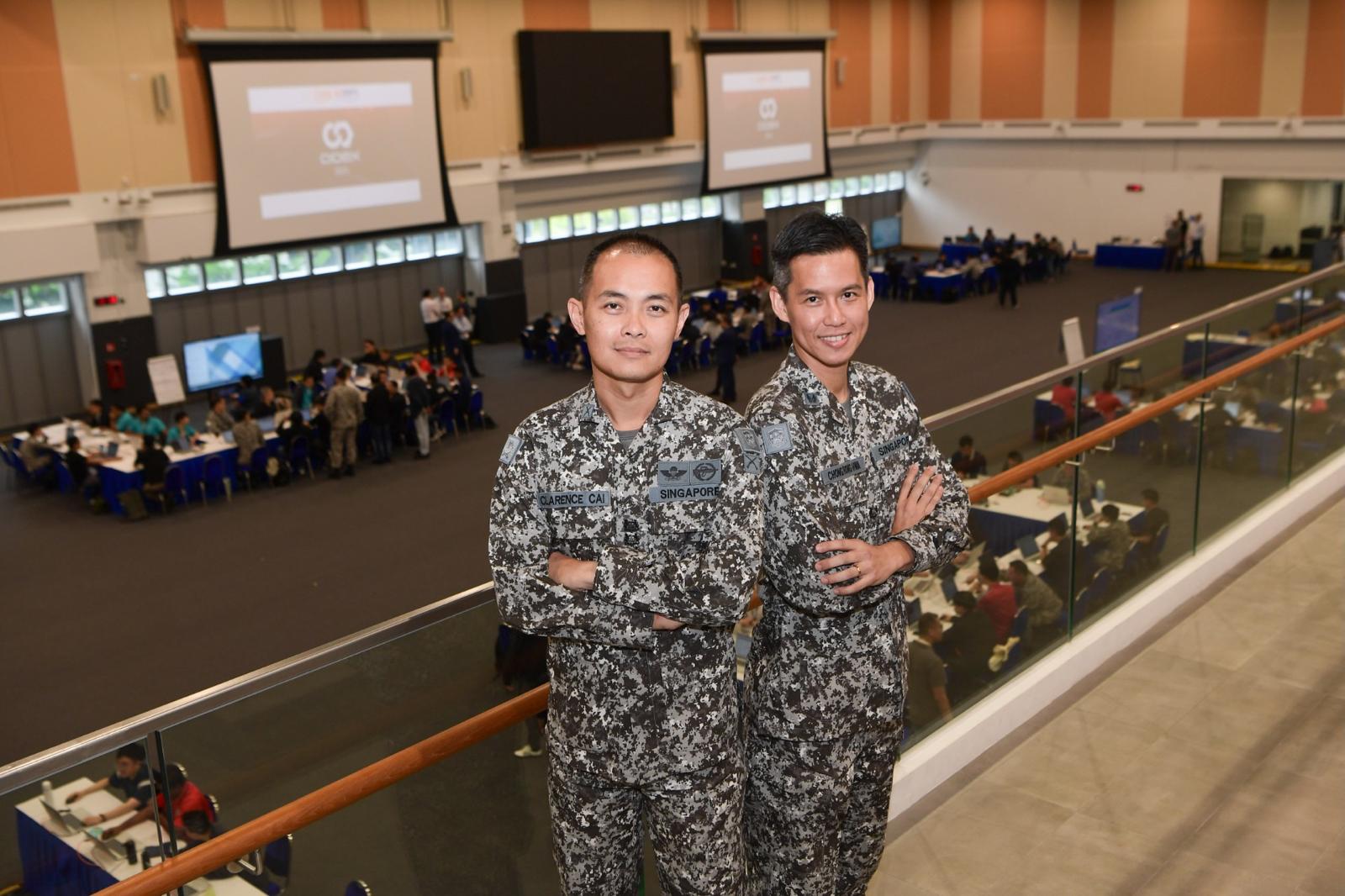REINFORCING SAFETY AT EVERY LEVEL
Over the years, the Singapore Armed Forces (SAF) has put in place various measures to strengthen its safety culture and system. As the second External Review Panel on SAF Safety (ERPSS) completed its tenure in December 2020, PIONEER takes a look back at how the SAF has enhanced its training safety culture, system and processes.//Story by SHERLYN QUEK //Photos by PIONEER PHOTOGRAPHERS
1. Making open reporting and safety accountability the norm
The SAF has made notable progress in strengthening its safety culture by encouraging open reporting and greater accountability at all levels. This was noted by the second ERPSS during its visit to the Island Defence Training Institute on 5 Nov 2020.
The panel was briefed on improvements observed across the SAF, such as a stronger safety mindset among service personnel, and a 49 per cent increase in open reporting instances in 2019 compared to 2018.
"Safety and health management is very much a movement and journey - the more you can identify gaps, the faster you can improve," said Mr Heng Chiang Gnee, chairman of the second ERPSS.
Service personnel are encouraged to report unsafe practices and near misses through their unit, or anonymously via safety hotlines, emails and other online channels. The Ministry of Defence and SAF will then investigate and take timely action to rectify any safety lapses and share lessons learnt.
Personnel found to have blatantly breached the SAF's safety regulations will be dealt with accordingly. Commanders and their units are also evaluated regularly based on their safety performance and culture during training and daily administration.
2. Appointing Safety Advocates to gather feedback on the ground
In 2019, the SAF appointed Safety Advocates in all units to strengthen its safety reporting culture and safety education.
Service personnel on the ground can easily voice their safety observations or concerns to their peers who have been appointed as Safety Advocates, who share this feedback with unit commanders regularly.
These advocates also help to strengthen the unit's safety culture by sharing safety-related information with their peers.
3. Providing greater accessibility to safety tests and learning materials
In July 2019, the Singapore Army made the annual Safety Awareness Test (SAT) mandatory for all soldiers, to strengthen personal safety ownership and awareness.
The test questions focus on soldiers' individual safety responsibilities such as work-rest management, hydration regime, weapons handling, and travelling on military vehicles.
This test is on top of the Training Safety Regulation Test that all commanders are required to take before any high-risk activity.
In July 2020, the Army made the SAT more easily accessible – service personnel can now take the test at their own time and pace on their personal electronic devices before training.
The Army also recently rolled out #SafeBuddy, an online learning platform and safety information repository which soldiers can access on their personal electronic devices. Personnel can revise for the SAT and look through learning materials such as safety-related infographics, videos and pre-training safety checklists.
4. Mandating 100 per cent safety inspections of all high-risk and field training in the Army
To ensure greater oversight of adherence to safety protocols on the ground, the Army has enhanced training and safety inspections in all units, with all high-risk and field training undergoing safety inspections at the unit or formation level in 2019.
Previously, inspections were mandated for high-risk activities but not for field training such as section-level tactical drills.
Since 2019, the Army has also staffed all active units and training institutes with full-time Unit Safety Officers to perform safety inspections.
These mandated inspections help to ensure that units on the ground are familiar with and comply with safety regulations.
5. Installation of rear-view cameras in armoured and wheeled vehicles
Since end-2018, the SAF has progressively installed rear-view cameras to its fleet of Bionix Infantry Fighting Vehicles, as well as in heavy wheeled vehicles such as six-tonners, multi-role utility vehicles and combat ambulances.
These cameras allow operators to see a live video feed of the vehicle's rear surroundings. This gives operators better situational awareness, especially when reversing.
6. Implementing safety table-top exercises for all high-risk exercises
Since April 2019, the SAF has expanded the implementation of safety table-top exercises for all high-risk activities.
This familiarises key appointment holders and soldiers with safety protocols and contingency plans - which include the identification of potential hazards; weapon and ammunition safety procedures; heat and hydration management plans; coordination of different vehicles operating together during training; as well as injury management and evacuation protocols.
The SAF also implemented the Action Learning Process, or ALP, in 2019 to reinforce safety in unit activities and daily routines. This means dedicated time is set aside at the Before, During and After Action Reviews of all exercises and training activities to discuss safety pointers.
Units must also set aside time weekly to share safety information and lessons learnt by their soldiers and safety advocates.
7. Enhancing heat injury prevention measures
In August 2018, additional measures were implemented SAF-wide to reduce the risk of heat injuries.
For example, all soldiers who go through fast marches and route marches of 12km or longer undergo an Arm Immersion Cooling System (AICS)* during and at the end of the activity.
The AICS is a simple and efficient method of quickly cooling the body's core temperature through the full submersion of hands and forearms in iced water.
*The use of the AICS is temporarily suspended in view of COVID-19 safe management measures. The SAF will continue to monitor the evolving COVID-19 situation in Singapore and review the measures in place to keep servicemen safe.
Another additional measure is the use of purpose-built cooling pads for immediate onsite treatment of suspected heat injuries. Instead of utilising ice packs, six cooling pads will be placed on the body – one each on the chest, abdomen, thighs; and two on the back.
These portable pads can decrease the temperature of a heat injury casualty up to 15 times faster than ice packs.
In 2019, the Army established a Heat Injury Prevention Task Force which looks into enhanced measures to proactively prevent heat-related injuries during training.
These measures include designing training programmes to avoid the hotter periods of the day, and allowing soldiers to change training attire for greater heat dissipation during strenuous physical training.
And if temperature readings hit 35 degree Celsius, strenuous training activities must be stopped - soldiers will rehydrate and rest until temperatures drop and a risk assessment is conducted to decide if training is resumed.
8 Simplifying the protocol for rapid casualty evacuation
Since August 2018, the SAF has reviewed the immediate treatment and evacuation protocol for soldiers who are unwell or struggling to cope with training, and lowered the bar for immediate evacuation so that casualties can be given the appropriate attention early.
Under this enhanced standard, all SAF commanders and medics must promptly evacuate any trainee who cannot respond to simple questions about time, place and identity immediately.
This simplified protocol provides all SAF commanders and medics clear guidance to initiate immediate evacuation for casualties to receive medical attention at the next level of care such as medical centres or hospitals.
9. Carrying out the Think-Check-Do routine
In February 2019, the SAF formalised the Think-Check-Do (TCD) drill as part of pre-maintenance task checks, making it mandatory for every Army technician.
As part of this nine-step drill, technicians must plan their task; review the risks and mitigation measures; as well as check the environment, equipment and the physical and psychological state of team members. They will also verbalise procedures and do a run-through of emergency-stop drills.
The TCD drill steps are printed on pocket-sized cards and issued to all technicians as a reference as well as to assist in the internalisation of these safety measures. This reminds servicemen to take greater ownership of their personal safety and look out for one another on the ground.
